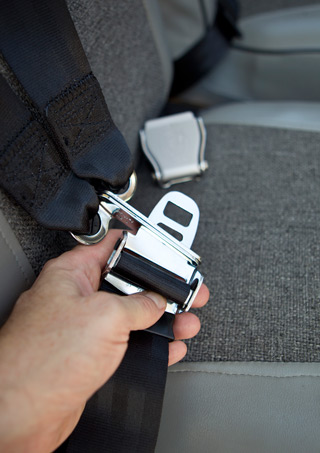
I grew up in a time when cars didn’t have rear seat restraints and kids rode bikes without helmets. It’s a fact that when my brother-in-law was a youngster, he and his friends would run behind the municipal mosquito control truck’s spray in the summer—somehow we’re all still walking around.
So I wasn’t shocked that the 1964 Piper Cherokee I bought in December 2010 had no shoulder restraints. The single lap belts were the equipment of another era, along with the cigar lighter and the automatic direction finder. Nor did I particularly miss shoulder restraints. I flew the airplane for 18 months without them, and none of my passengers seemed to mind.
One would-be passenger, it turned out, did mind. David Kenny, manager of aviation safety analysis for the Air Safety Institute, congratulated me when I brought home Miss J to Frederick Municipal Airport (“Renter No More,” September 2011 AOPA Pilot). A fellow Piper owner who flies the heck out of his 1967 Arrow, he told me he’d be my first passenger—as soon as I got shoulder belts installed. Kenny spends a lot of time going over general aviation accident data, so he’s got solid evidence to back up his no-fly stance. An examination of accidents in fixed-wing aircraft that occurred from 2001 to 2010 revealed that out of 9,036 accidents in which both seat belts and harnesses were used, just 14 percent were fatal and 9 percent caused serious injuries. The combined percentage of accidents that were fatal or serious was 31 percent for aircraft in which a belt was used but not a harness. That figure dropped to 19 percent when a harness was used.

The FAA says that use of shoulder belts along with seat belts reduces the major injuries by 88 percent, and fatalities by 20 percent.
It’s hard to argue with those numbers, especially considering that my son, William, frequently rides right seat with me. I owe it to him to protect him, not to mention the thousands of dollars’ worth of orthodontia he sports.
Since airbag seatbelts aren’t on the horizon as a retrofit for Pipers, I wavered just a bit between a three- and four-point harness before ordering an inertia reel shoulder harness and lap belt system from B.A.S. Inc. in Eatonville, Washington. As a short person, I prefer shoulder straps that actually stay on my shoulders. The three-point harness in my flight school’s Piper Archer had a tendency to try to throttle me during cruise flight.
AmSafe, a longtime manufacturer of restraints and a recent entrant into the airbag seat belt market, designs the B.A.S. system. It can be purchased as an STC’d retrofit for the PA–28, –32, and –34 series. At a base price of $1,185 for two front-seat harnesses with utility buckles, the B.A.S. system is one of the pricier options out there. You can purchase three-point fixed and inertia reel harnesses that are a bit less expensive.
It’s worth noting that the FAA approves retrofit shoulder harness installations as an STC, a field approval, or as a minor change. The FAA has said that while it doesn’t encourage the installation of retrofit shoulder harnesses as a minor change, it will not forbid the approval of a retrofit shoulder harness installation as a minor change in the front seats of small aircraft manufactured before July 19, 1978, and in other seats of some airplanes manufactured before December 13, 1986, provided there’s no change of the structure—no welding or drilling holes. Owners contemplating a minor change installation should look to advisory circulars 43.13-2A, 21-34, and 23-4 for guidance on hardware, restraint angles, and attachment locations.

I could have installed the shoulder harnesses under the supervision of an A&P. But while I’m comfortable changing the oil, I turned this job over to Landmark Aviation at Frederick Municipal Airport.
Shop Supervisor Robin Regester carefully inspected the contents of the B.A.S. package to ensure all hardware and the STC were accounted for—they were—and warned me that any estimated installation times provided by the manufacturer might be a little optimistic. The instructions seemed straightforward—10 steps in all. The most complicated part of the process appears to be cutting holes in the bulkhead, installing mounting brackets to hold the inertia reels, and installing the reels themselves. The retrofit includes two sets of Velcro washers that are fastened onto the windshield frame. These serve to hold the shoulder straps up and out of the way when they’re not in use.
The final step, “Install the new lap belts and check for operation of the harness system,” is followed by this boldface sentence: “CAUTION: This does not mean crashing the airplane.” Remember the product warning on the Superman Halloween costume that admonished, “Warning: This costume does not enable flight or super strength”?
Regester reminded me to hang on to the STC and any manufacturer’s recommendations for maintaining and replacing the seat belts, and to keep them with the aircraft’s logs and other paperwork.
The weight of the two harnesses is five pounds total. Subtracting two pounds and a little more than two ounces for the old lap belts, that means the aircraft gained a little over two pounds for a lot of additional safety. Not a bad tradeoff.
Email [email protected].



